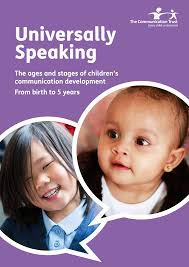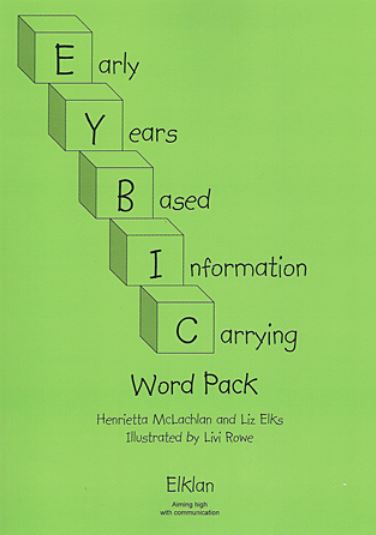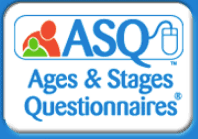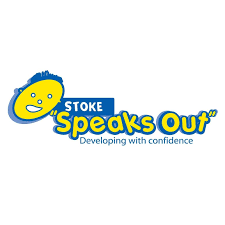How I will know if a child or young person needs help with their understanding, talking and communication
You haven't selected an area yet so you will only see core resources from across the UK. Select your local area from the home page
The resources here will help you reach the outcome: "I know what to expect and when with toddlers' speech, language and communication."
Click the star icon ![]() next to the items you want to save and view them in your pathway
next to the items you want to save and view them in your pathway
The Integrated Review
The early years foundation stage (EYFS) Progress check at age 2 and the Healthy Child Programme review offer 2 opportunities to:
- identify additional needs for children aged 2 to 3
- work in partnership with parents, carers, guardians and any relevant professionals to put the right support in place for the children who need it
Since 2015, the government has encouraged early years providers, local authorities, and health visiting services to work together to combine the Healthy Child Programme review and the EYFS Progress check at age 2. This is known as an ‘integrated review’.
Cost: Free



WellComm Assessment
The WellComm Assessment is for use with any child aged 6 months to 6 years and enables practitioners to evaluate children's language skills, draw up a detailed profile and identify children at risk of having difficulty in developing language skills. It identifies those children who need setting-based monitoring and support and those who need referral to specialist support services. The screen is completed through observation, discussion with families and screening by asking children to carry out a variety of tasks ensuring that results obtained and conclusions drawn are more accurate than using one approach alone.


Early Language Identification Measure and Intervention (ELIM)
This handbook is a guide for practitioners to carry out the Early Language Identification Measure and Intervention programme as part of the 2 to 2½ year review. It is structured as a conversation with the child’s parent/carer, encouraging practitioners to support the parent/carer to make informed decisions for their child. It outlines the 3 steps of the Early Language Identification Measure and Intervention programme.
The first step (Assessment) concerns a simple measure for identifying which children might have early SLCN as part of their 2 to 2½ year review. Based on the outcomes of this first step, those children where there is no current need can be offered general signposting to support ongoing language development. Where a need is identified they can be offered step 2 and 3 of the identification and intervention programme.
The second step (Conversation) gives guidance on how to discuss and explore the identified needs and observations of the child’s language with the parent/carer. This may then lead to signposting to specific support and consideration of options.
These can be explored fully in the third step (Intervention) which offers a framework for comprehensive engagement with families to work in partnership on agreed goals and interventions tailored to the family.
For further information: https://research.ncl.ac.uk/elim-i/elim-i/
Cost: Free



A Guide to Identification - Worcestershire SLCN Pathway
Identifying SLCN can be problematic for many reasons. Children and young people may have other difficulties as well as SLCN, they may have a wide and complex range of needs and therefore there can be co-occurrence with other diagnoses. SLCN is often considered to be a 'hidden disability'. Some aspects of SLCN are more visible than others, particularly those associated with speech sounds, others are less so. We know that early identification leads to better outcomes for children and young people, so the sooner a need is identified the better.
The Worcestershire SLCN Pathway guide and tools help practitioners to support identification of SLCN.
Download Worcestershire SLCN Pathway's Guide to Identification
Cost: Free



Child Monitoring Tool
A profiling tool to monitor development of a toddler in relation to Listening and Attention; Understanding; Talking; and Social Skills. As a practitioner you can highlight statements that the toddler can do through ongoing observations and assessment as well as discussion with parents. The tool includes checkpoint statements which need to be particularly considered as, if a toddler is not achieving these skills at the age indicated, this may indicate a speech, language and communication need that requires ongoing investigation and monitoring.
Cost: Free


TCT Universally Speaking 0-5
Universally Speaking is a series of booklets for parents or anyone who works with children and includes a booklet for children aged 0-5. It gives typical communication skills, including attention and listening and understanding; interactions and speech. Use the booklets to find out whether a child is on the right track, what helps them learn to talk and listen and what to do if you have concerns about any of their communication abilities. You can also share this with the families of children you support.
Cost: Free




Worcestershire Identifying SLCN
Identifying SLCN can be problematic for many reasons: children may have other difficulties as well as SLCN, they may have a wide and complex range of needs and therefore there can be co-occurrence with other labels and diagnoses. SLCN is often considered to be a 'hidden disability'. Some aspects of SLCN are more visible than others, particularly those associated with speech and sounds. Others are less so, for example the child who is experiencing difficulties understanding or using language may appear to be inattentive, passive or even rude. There are children who become very skilled at hiding their difficulties, e.g. by watching other people so they know what to do or by pretending they know when they don't. SLCN may be missed altogether or masked by these other charcateristics.
Early warning signs information available to download.
Cost: Free


Enquiry Line
The Speech and Language UK Enquiry Service gives parents a chance to discuss questions or concerns about their child’s speech, language and communication development with one of Speech and Language UK’s speech and language therapists. The therapists can give helpful information about children’s talking and communication development as well as tips on improving these skills. They can also offer advice on ages and stages and what can be done to help the child get the right support.
Cost: Free




Progress Checker
Speech and Language UK's progress checker provides parents with short questions they can answer to see how their toddler is getting on with their speech, language and communication development.
Cost: Free



Afasic
Afasic supports parents and carers with young children who have difficulties with listening, talking and understanding others. Here is information for you to use and share with families of the children you support. It includes a wide range of information about talking, listening and understanding and what might cause these difficulties. If families are worried that their toddler is not talking or not saying as much as other children of their age, they can contact Afasic by telephone or email to speak to someone who can help.
Cost: Free




Afasic Parent Helpline
If a parent is worried about their child / young person's speech, language and communication, share this Afasic helpline information so that they can speak to someone who can help by telephone or email.
Cost: Free




Speech and Language UK Ages and Stages
This is a guide to the typical stages of speech and language development in children. Children develop language at different rates. However, understanding what is typical can help you identify speech and language problems early. This page also provides information about how to support toddlers' development.
Cost: Free




Development Matters
Development Matters supports all those working in early childhood education settings to implement the requirements of the EYFS and support the early learning of young children. It can be used as part of daily observations, ongoing assessment and to inform planning. It can also be used to make best-fit summative judgements and with parents in relation to whether a child is showing typical development, is at risk of delay or is ahead for their age. The age and stage bands suggest a typical range of development in many areas including Communication and Language; Personal, Social and Emotional Development and Literacy. The development statements have not been designed to be used as a checklist but can highlight areas to focus on for developing key skills.
Cost: Free



WellComm Toolkit
The WellComm Assessment is for use with any child aged 6 months to 6 years and enables practitioners to evaluate children's language skills, draw up a detailed profile and identify children at risk of having difficulty in developing language skills. It identifies those children who need setting-based monitoring and support and those who need referral to specialist support services. The screen is completed through observation, discussion with families and screening by asking children to carry out a variety of tasks ensuring that results obtained and conclusions drawn are more accurate than using one approach alone.
The WellComm Big Book of Ideas has been designed for use following a WellComm assessment of any child aged 6 months to 6 years. It includes general strategies as well as very specific activities to develop and improve children's speech and language skills and can be implemented by any early years practitioner or parent using toys and items that can be found in settings or at home. The activities are used to develop the particular skills highlighted for support in the assessment - this means that the activities delivered are specific and appropriate to the individual child language development stage and can be used in the setting or at home.
Training videos are included in the toolkit.




EYBIC Word Pack
Early Years Based Information Carrying Word Pack is a rich resource of beautiful pictures and interesting activities to help you assess and promote the vocabulary, speaking and listening of toddlers you work with through the principle of Information Carrying Words. The Information Carrying Words concept provides a structured framework which helps children increase the amount of information they can remember. At the same time EYBIC will develop their knowledge and language of everyday topics.
Cost: £




ASQ-3
The Ages & Stages Questionnaires®, Third Edition (ASQ®-3) is a developmental screening tool that pinpoints developmental progress in children between the ages of one month to 5 ½ years.


Speech and Language Chatter Matters
This series of videos for parents and carers outlines how speech, language and communication skills develop; what families can do to support their child; how these skills develop over time; children with speech and language needs and how to access information and support.
Cost: Free





Stoke Speaks Out - Sound Development Checklist
An overview of the typical sounds children should be able to use in words at different ages.
Cost: Free


UKBT Assessment Tool
The UK bilingual toddlers online assessment tool is a free online site for UK educators and health care practitioners to assess the word development of bilingual toddlers at 24 months.
Cost: Free








